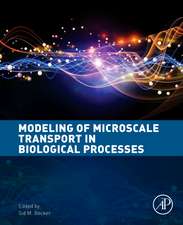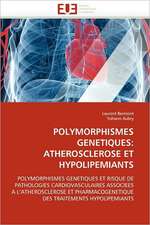Molecular Evolutionary Models in Drug Discovery
Autor Juan Buenoen Limba Engleză Paperback – 23 ian 2020
- Examines the integration and application of evolutionary models in the pharmaceutical industry to create new drug development platforms
- Investigates the biotechnological prospecting of secondary metabolites and their potential use in the discovery of new drugs
- Evaluates the ecosystem of living beings and how its molecular adaptation might improve the success of therapies
Preț: 713.65 lei
Preț vechi: 751.21 lei
-5% Nou
Puncte Express: 1070
Preț estimativ în valută:
136.55€ • 142.96$ • 112.99£
136.55€ • 142.96$ • 112.99£
Carte tipărită la comandă
Livrare economică 29 martie-12 aprilie
Preluare comenzi: 021 569.72.76
Specificații
ISBN-13: 9780128176139
ISBN-10: 012817613X
Pagini: 192
Ilustrații: 40 illustrations (14 in full color)
Dimensiuni: 152 x 229 mm
Editura: ELSEVIER SCIENCE
ISBN-10: 012817613X
Pagini: 192
Ilustrații: 40 illustrations (14 in full color)
Dimensiuni: 152 x 229 mm
Editura: ELSEVIER SCIENCE
Public țintă
Pharmaceutical scientists; pharmacologists, researchers, biologists, medical microbiologists, bioprospectors, biodiversity researchers, biochemists, pharmacists, and clinicians, and those who are interested in drug discovery; R&D of the preclinical drug developmentCuprins
1. Introduction2. Molecular Autopoiesis3. Natural products and molecular networks4. Symbiogenesis autopoietic5. Metabolomic autopoiesis6. Clinical outcome and autopoiesis7. Toxical autopoiesis8. Future Research and Applications











